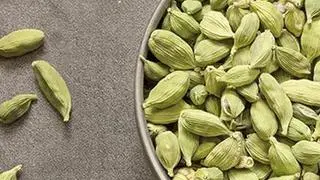At its meeting on February 26, the Cotton Advisory Board (CAB) pruned the projection for cotton production by five per cent to 312 lakh bales (of 170 kg each). But the Agriculture Ministry in its third advance estimate on April 6 projected the output unchanged at 339.27 lakh bales. In between these two divergent figures, the Textile industry is sure of its footing, saying the Agriculture Ministry's projections are not in tune with reality.
“The data on cotton arrivals are not accurate for want of scientific methods,” said Mr A. Ramani, a cotton analyst.
“We think the CAB's estimate itself is higher and we have said that in the February 26 meeting,” said Mr D.K. Nair, Secretary-General of the Confederation of Indian Textile Industry (CITI)
“Cotton production could be between 312 lakh bales and 320 lakh bales,” said Mr Anand Poppat, Vice-President of Saurashtra Ginners Association.
According to sources, the Department of Cotton Development in the Agriculture Ministry had insisted during the February 26 meeting that the production was 339 lakh bales. But with other board members coming up with their own projections, a figure of 312 lakh bales was arrived at.
The CAB comprises representatives from the Agriculture Ministry, Textiles Ministry, trade, growers, textile mills and exporters. Sources said projections are arrived at through consensus at the Board meeting.
The Agriculture Ministry does not have such a process to make its projections, sources said.
Some ginning mills purchase cotton directly from farmers. This, sources said, is hardly taken into account by the Agriculture Ministry. The Ministry either goes by arrivals at the Agriculture Produce Marketing Committee yards or information from its field staff, particularly extension workers.
“Till now, 285-290 lakh bales have arrived throughout the country. Gujarat farmers are holding at least 15 lakh bales of cotton with them,” said Mr Poppat.
Maharashtra growers, too, are said be holding back some of their produce.
On the other hand, Mr Nair said lack of stocks in the market is a clear indication of production being lower than estimates. “CITI's estimate of the cotton crop is 308 lakh bales,” he said.
On the other hand, Mr Ramani said the Agriculture Ministry's figures on the area under cotton is ‘close to reality'.
Sources said a more accurate figure of cotton production could be got at the stage where raw cotton is ginned and pressed into bales.
Though raw cotton prices have witnessed a drop this week, industry players do not attribute it to the Agriculture Ministry's projection. Traders in Gujarat attributed the fall to farmers' resorting to sales.
On Friday, raw cotton was quoted between Rs 4,250 and Rs 6,795 a quintal, based on quality. Most of the trades took place at Rs 5,000. On Tuesday, prices ruled between Rs 4,500 and Rs 6,750 with most trades taking place at Rs 5,625.
Global prices for comparable quality are 35 cents lower than domestic rates.
“There is a general lack of demand for cotton. Spinning mills are not buying since they have ample stocks of yarn,” said Mr Poppat.
The 10.5 excise duty slapped on branded garments and the closure of units in Tiruppur in Tamil Nadu are affecting yarn and fabric demand.
“Prices are maintaining a range despite lukewarm demand,” said Mr Ramani.
Sources said cotton prices surged last week on rumours of fresh export quota being opened. The Union Agriculture Minister, Mr Sharad Pawar, has also urged for allowing further exports of cotton.
The Government had fixed a ceiling of 55 lakh bales of cotton for export this season ending September and entire quota was exhausted by December.
The textiles industry is opposed to further export of cotton since prices have increased by over 70 per cent this year. Cotton prices have increased on cues from the global market, which has been driven by demand from China.







Comments
Comments have to be in English, and in full sentences. They cannot be abusive or personal. Please abide by our community guidelines for posting your comments.
We have migrated to a new commenting platform. If you are already a registered user of TheHindu Businessline and logged in, you may continue to engage with our articles. If you do not have an account please register and login to post comments. Users can access their older comments by logging into their accounts on Vuukle.